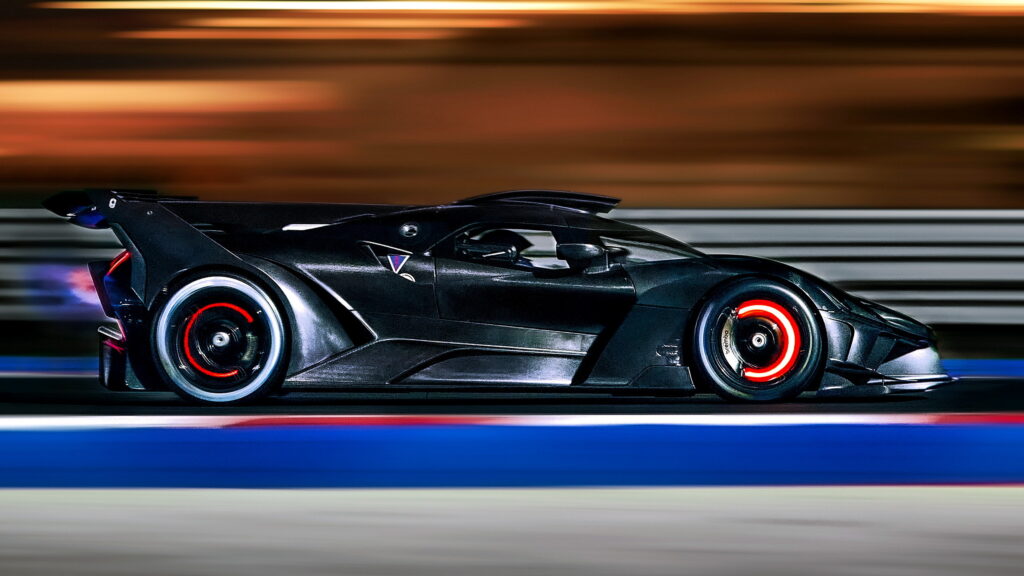Working with Brembo, Bugatti claims that the brakes on the Bolide are up to F1 and LMDh standards
3 hours ago
 –>
–> 
–>
When discussing the Bugatti Chiron and its closely or loosely related derivatives such as the Divo, Centodieci, Bolide, and Mistral, much attention naturally focuses on the colossal 8.0-liter quad-turbocharged W16 engine, which, depending on the application, can deliver mountains of power approaching the 2,000 hp mark.
However, there’s more to these hypercars than just raw power. Take the Bugatti Bolide, for example. This uniquely crafted model places a tuned W16, capable of delivering up to 1,825 hp when running on 110 octane racing fuel, on a bespoke monocoque that’s even stronger and stiffer than the Chiron’s. Here, it’s all about track performance, necessitating massive brakes to tame the engine’s immense power and weight. And boy did Bugatti deliver.
Hidden behind the Bolide’s front wheels, Bugatti claims it has installed the largest carbon-carbon brakes ever fitted to a track-only hypercar. Developed by Brembo, the front calipers feature eight pistons to clamp four 25 mm pads onto the car’s remarkable 390×37.5mm carbon rotors. The rear brakes utilize six-piston calipers and also have four pads, clamping down on 390x43mm carbon rotors.
advertisement scroll to continue
Read: Bugatti Bolide Track Hypercar Has A Special Monocoque With Incredible Safety Tech
Not only are they massive, but Bugatti says that the whole braking system is up to the standards of the highest classes in racing, such as the Le Mans hypercar class and Formula 1. And thanks to their carbon construction, each disc weighs just 3.175 kg (6.9 lbs).
“Developing the brake system for the Bugatti Bolide was a unique and very exciting challenge for the Performance Division of Brembo — and we are proud of what we achieved,” said Mario Almondo, Brembo Performance’s COO. “Using carbon compounds that are similar to those in Formula 1 meant that, despite the size and power of the Bolide, we were able to produce the lightest possible design.”
To keep the brakes nice and cool, Bugatti spent a long time considering how the air moves over the car. Downforce was of course considered, but the automaker also designed cooling ducts to feed air to the brakes to prevent them from overheating and fading.
Moreover, the brakes are designed to work for drivers at many experience levels, featuring a “wet” driving mode that allows the Bolide’s computers to make fine adjustments to the control system to induce understeer. You can see the impressive results of that work in the video below.
“In collaboration with Brembo, we’ve engineered a brake system that not only meets but surpasses the extraordinary demands of the Bolide,” said Emilio Scervo, Bugatti Rimac’s CTO. “Our partnership has yielded a masterpiece — their innovative technology aligns seamlessly with our vision, to ensure the Bolide’s brake system is a key part of another pinnacle in Bugatti’s storied legacy.”
Bugatti will only produce approximately 40 examples of the Bolide, all of which have been spoken for at a price of about $4 million each.
[embedded content]


